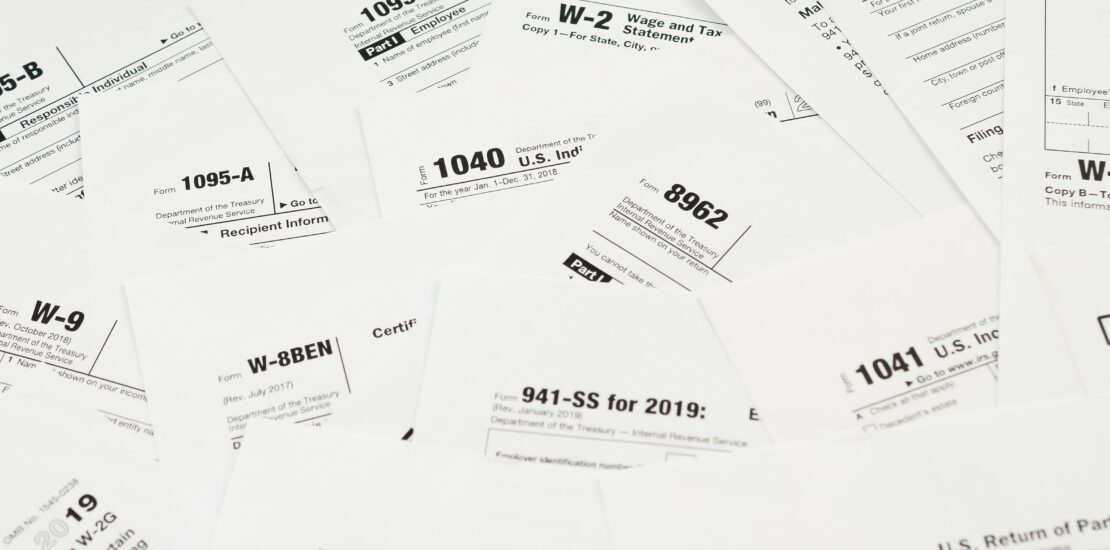The Ultimate Guide to 1099 Form Filing: Deadlines, Requirements, and Tips
- January 4, 2024
- Posted by: Steven Abbott
- Categories: Bookkeeping, Compliance, Taxes

Understanding the 1099 Form
What is a 1099 Form?
The 1099 form is an IRS tax form used to report various types of income other than wages, salaries, and tips. It’s essential for freelancers, independent contractors, and other non-employees who receive income from a business or individual. The form serves as a record to the IRS that you’ve received income during the tax year.
Types of 1099 Forms:
- 1099-MISC: For miscellaneous income
- 1099-INT: For interest income
- 1099-DIV: For dividends and distributions
- 1099-R: For pensions, annuities, retirement, or profit-sharing plans
Who Needs to File a 1099 Form?
Filing a 1099 form is necessary for individuals and entities that make certain types of payments. Here’s who should be concerned:
Businesses: If you’ve paid an individual or non-corporate entity more than $600 in year for services rendered, you’re required to file a 1099 form.
- Self-Employed Individuals: Freelancers and independent contractors who have earned more than $600 from a client should expect to receive a 1099 form.
- Rental Property Owners: Those receiving rental income may need to file a specific 1099 form.
- Investors: If you receive dividends or interest from investments, you’ll likely receive a 1099 form.
Understanding who needs to file and what types of income are reported can prevent costly mistakes and ensure compliance with tax laws.
The Importance of Filing 1099 Forms
Filing 1099 forms is not just a bureaucratic formality; it’s a legal requirement with significant implications.
Legal Obligations and Compliance:
- IRS Tracking: The IRS uses 1099 forms to track income that might otherwise go unreported. This is crucial in maintaining a fair and functioning tax system.
- Penalties: Failure to file a 1099 form can result in hefty fines and penalties. The amount varies based on how late the filing is and the size of the unreported income.
Role in Tax Reporting:
- Transparency: 1099 forms provide a clear picture of an individual’s or business’s income, ensuring accurate tax reporting.
- Essential for Freelancers: For freelancers and contractors, 1099 forms are vital in declaring their full income and avoiding underpayment penalties.
By understanding the importance of these forms, individuals and businesses can avoid legal pitfalls and remain in good standing with the IRS.
Key Deadlines for 1099 Form Filing
Meeting deadlines is crucial in the world of tax filing, and 1099 forms are no exception.
1099 Form Filing Deadline
The typical deadline for filing most 1099 forms is January 31st of the year following the tax year in question. For example, for income earned in 2023, the 1099 should be filed by January 31, 2024. However, there are variations depending on the type of 1099 form, so it’s essential to verify the specific deadlines.
What Happens if You Miss the Deadline?
Missing the filing deadline can lead to several consequences:
- Penalties: These can range from $50 to $270 per form, depending on how late the filing occurs.
- Increased Scrutiny: Habitual late filing can draw unwanted attention from the IRS, potentially leading to audits.
It’s therefore critical to mark these deadlines in your calendar and prepare your documents well in advance to ensure timely filing.
Preparing to File Your 1099 Form
Filing a 1099 form requires careful preparation to ensure accuracy and compliance. Here’s how you can prepare effectively:
Necessary Documents and Information
Before you start filling out the 1099 form, gather the following information:
- Taxpayer Identification Numbers (TINs): This includes Social Security numbers or Employer Identification Numbers (EINs) for both the payer and the recipient.
- Payment Records: Detailed records of all payments made to the contractor or service provider.
- Personal Information: Addresses and contact details of both parties.
- Account Statements: For forms like 1099-INT or 1099-DIV, ensure you have your financial statements at hand.
Pro Tip: Use accounting software or a spreadsheet to keep track of payments throughout the year. This makes it easier to report accurately when it’s time to file.
Choosing the Right 1099 Form
Selecting the correct 1099 form is essential:
- 1099-MISC: Used for miscellaneous income like rent, prizes, awards, healthcare payments, etc.
- 1099-NEC: For reporting non-employee compensation, primarily for freelancers and contractors.
- Other 1099s: Based on specific income types like interest, dividends, government payments, etc.
Example: John, a freelance graphic designer, received a total of $15,000 from various clients in 2023. Each client who paid him over $600 is required to file a 1099-NEC form, providing copies to both John and the IRS.
Step-by-Step Guide to Filing a 1099 Form
Filing a 1099 form can be streamlined into a few clear steps. Here’s a detailed guide:
Filing Electronically vs. Paper Filing
You have two options for filing: electronically or via paper.
-
Electronic Filing:
- Advantages: Faster, secure, and you receive confirmation from the IRS.
- How to File: Use the IRS FIRE system (Filing Information Returns Electronically) or third-party tax software. Typically we recommend using QuickBooks Online or eFile4biz.com
- Requirement: Mandatory for those filing 10 or more forms. Please note this was changed this year and most will need to e-file.
-
Paper Filing:
- Advantages: Preferred by some for simplicity or lack of internet access.
- How to File: Obtain 1099 forms (they cannot be downloaded due to specific IRS scanning requirements) from the IRS, post offices, or office supply stores.
Example: Sarah, a small business owner, opts for electronic filing as she finds it more efficient and likes having instant confirmation from the IRS.
Submitting to the IRS and Recipients
Once the 1099 form is filled out, it’s time to distribute it:
- To the IRS: Ensure it’s sent by the deadline which is January 31st or the next business day if that falls on a weekend. Most 3rd party providers require submission to them 3-5 days in advance to meet the IRS deadline.
- To the Recipient: The recipient also needs a copy by the deadline for their tax records.
Important: Remember to keep a copy for your records.
Fact: In 2023, over 70% of 1099 forms were filed electronically, reflecting a growing trend towards digital tax management.
Common Mistakes and How to Avoid Them
Filing 1099 forms can be tricky, and mistakes are not uncommon. However, being aware of these errors can help you avoid them.
Typical Errors in 1099 Form Filing
- Incorrect or Missing Information: Such as wrong TINs or addresses.
- Filing the Wrong Form Type: Mixing up forms like 1099-MISC and 1099-NEC.
- Missing Deadlines: Leading to penalties and interest charges.
- Overlooking Smaller Payments: Not reporting payments because they seem insignificant.
Case Study: A freelance writer, Emily, once missed reporting a small project fee of $700 from a client. This oversight resulted in a penalty when the IRS cross-checked her income.
Double-Checking Your 1099 Forms
To avoid these pitfalls:
- Review All Information: Double-check TINs, addresses, and payment amounts.
- Understand Form Types: Be clear about which 1099 form applies to each income type.
- Track Deadlines: Use calendar reminders for IRS deadlines.
- Record Keeping: Maintain detailed records of all transactions throughout the year.
Quote: “Accuracy in 1099 form filing is not just about compliance, it’s also about maintaining professional integrity.” – John Doe, CPA.
Pro Tip: Consider using a tax professional or software to help with accurate filing, especially if you’re dealing with multiple forms.
After Filing Your 1099 Form
Once you’ve successfully filed your 1099 form, there are still a few steps to consider ensuring everything remains in order for future reference and compliance.
Record Keeping and Management
Proper record-keeping post-filing is crucial. Here’s what to do:
- Keep Copies: Store copies of the filed 1099 forms, along with related documentation, for at least three years. This is important in case of audits or discrepancies.
- Organize Records: Maintain an organized filing system, either digitally or physically, for easy access.
Example: David, a small business owner, uses cloud storage to keep digital copies of his 1099 forms, categorizing them by year and type for easy retrieval.
Preparing for Next Year
To avoid the end-of-year rush and potential mistakes, start preparing for next year’s 1099 filing early.
- Update Records Regularly: Keep your financial records updated throughout the year.
- Stay Informed: Be aware of any changes to tax laws or form requirements.
- Budget for Taxes: Set aside funds regularly to cover your tax liabilities.
Annual Checklist for 1099 Filers
| Month | Task |
|---|---|
| January | File previous year’s 1099s; update record-keeping systems |
| February-April | Review and categorize financial transactions regularly |
| May-August | Mid-year check on records; adjust tax savings if necessary |
| September-December | Prepare documents and information for year-end filing |
Filing 1099 forms is a critical component of responsible financial management for businesses and individuals alike. While the process can seem daunting, understanding the requirements, deadlines, and common pitfalls makes it manageable. The key is to stay organized, be diligent in record-keeping, and approach the task with a thorough understanding of the IRS guidelines.
Remember, the 1099 form is not just a tax requirement; it’s a reflection of your professional integrity and commitment to compliance. By following the steps outlined in this guide, you can ensure a smooth 1099 filing process, avoid penalties, and maintain a solid financial standing.
Additional Resources
For more information and assistance with 1099 form filing, check out the following resource:

